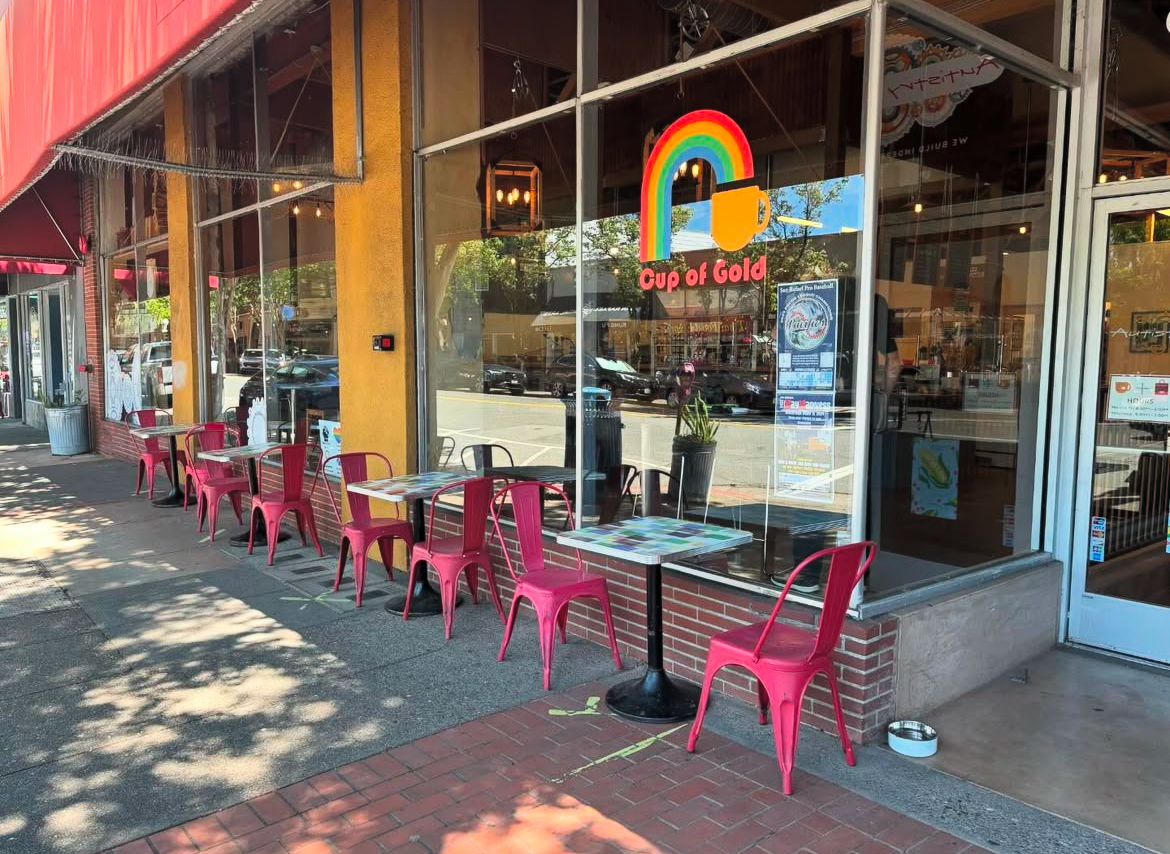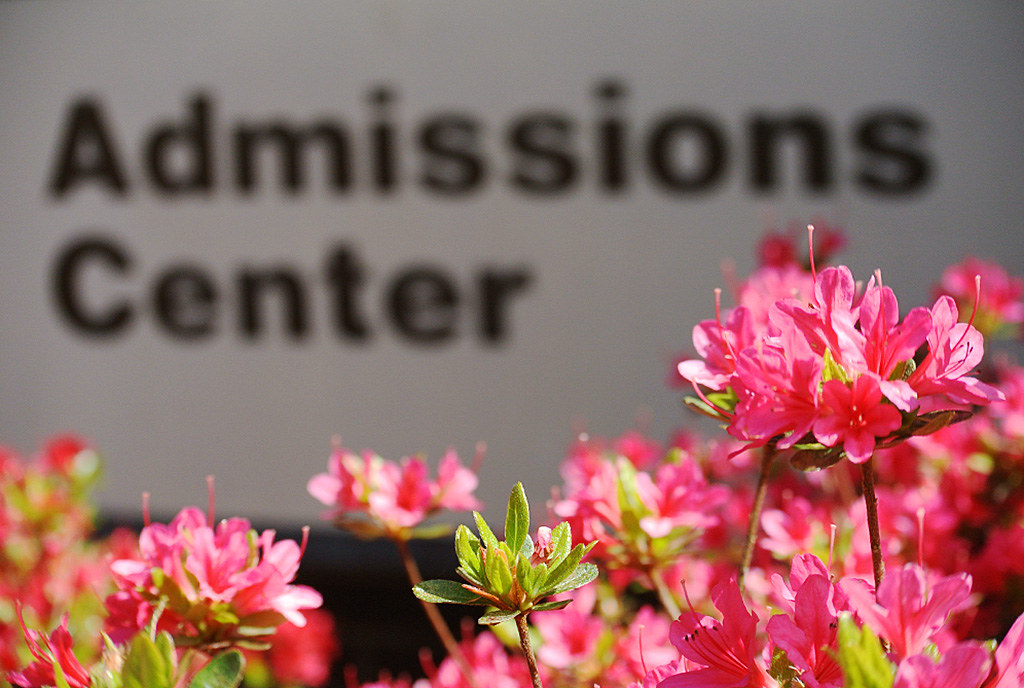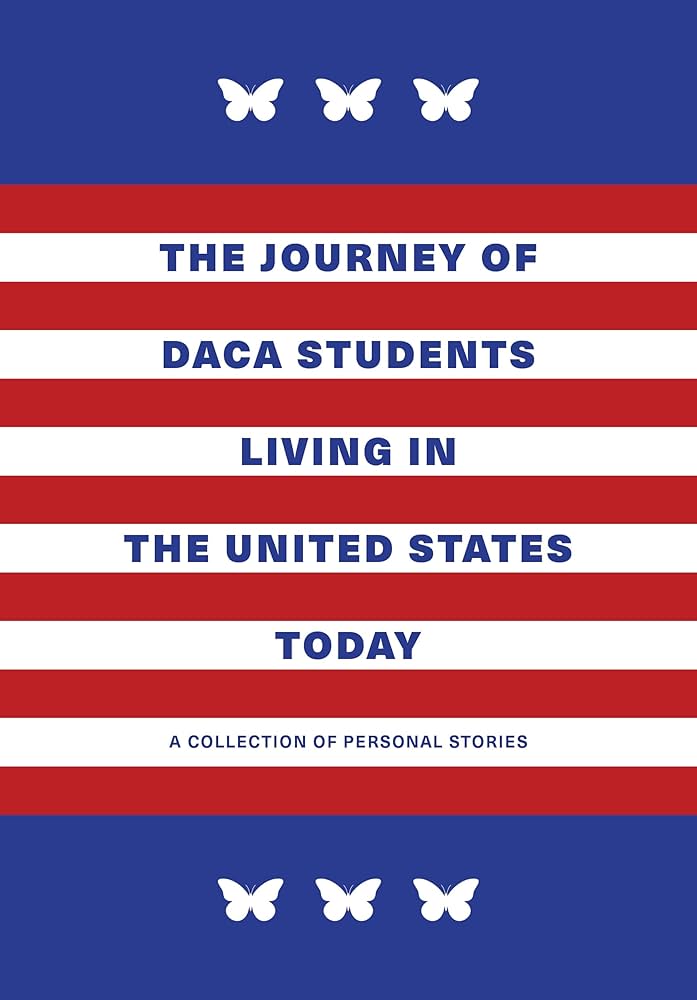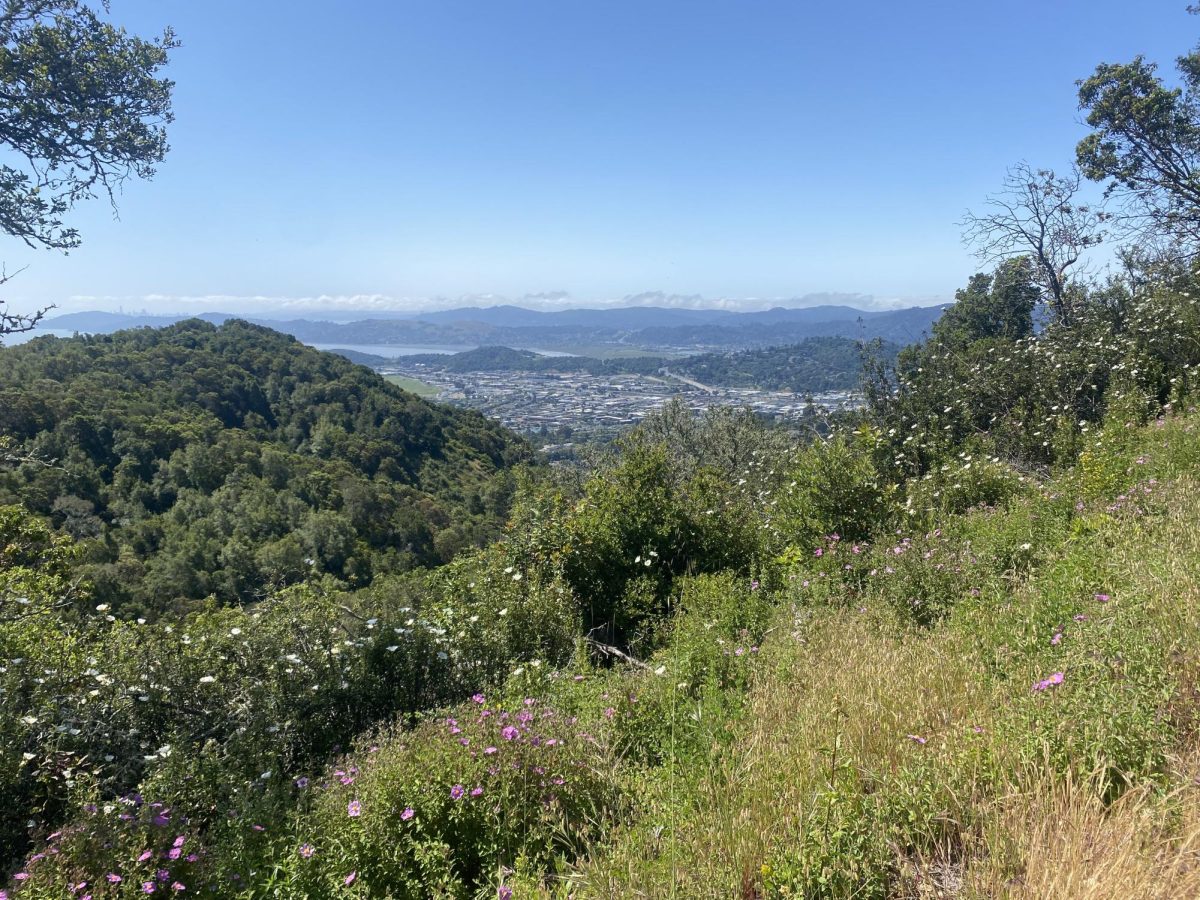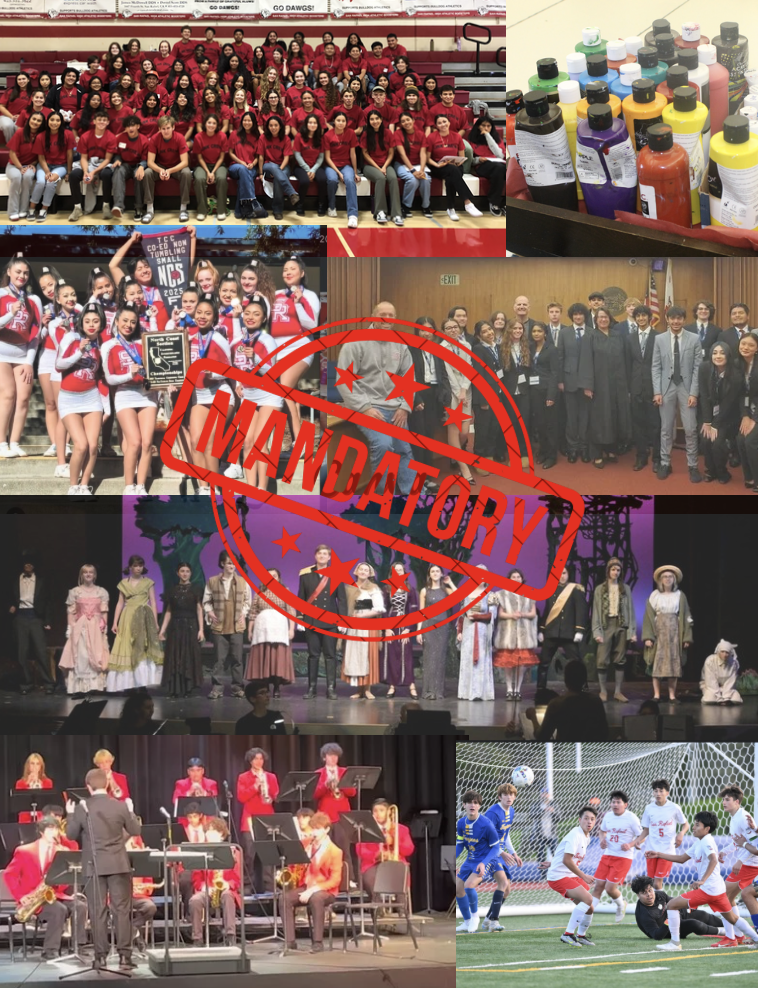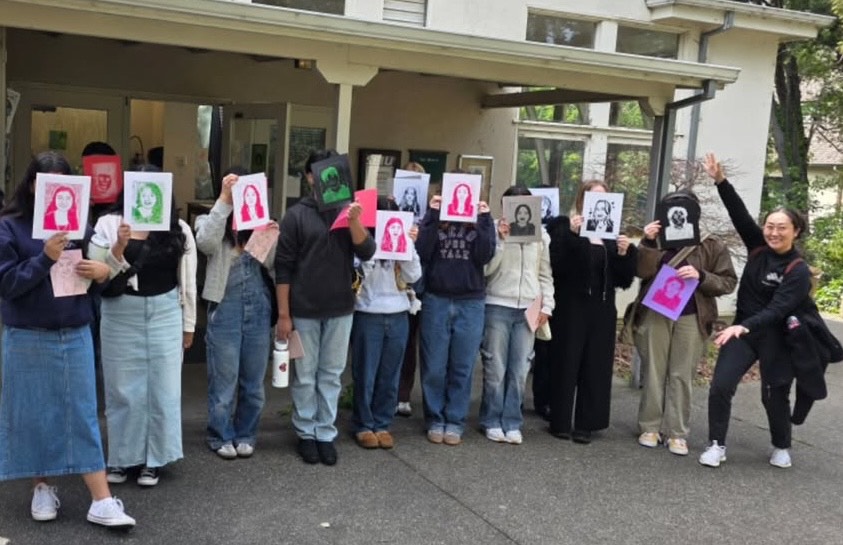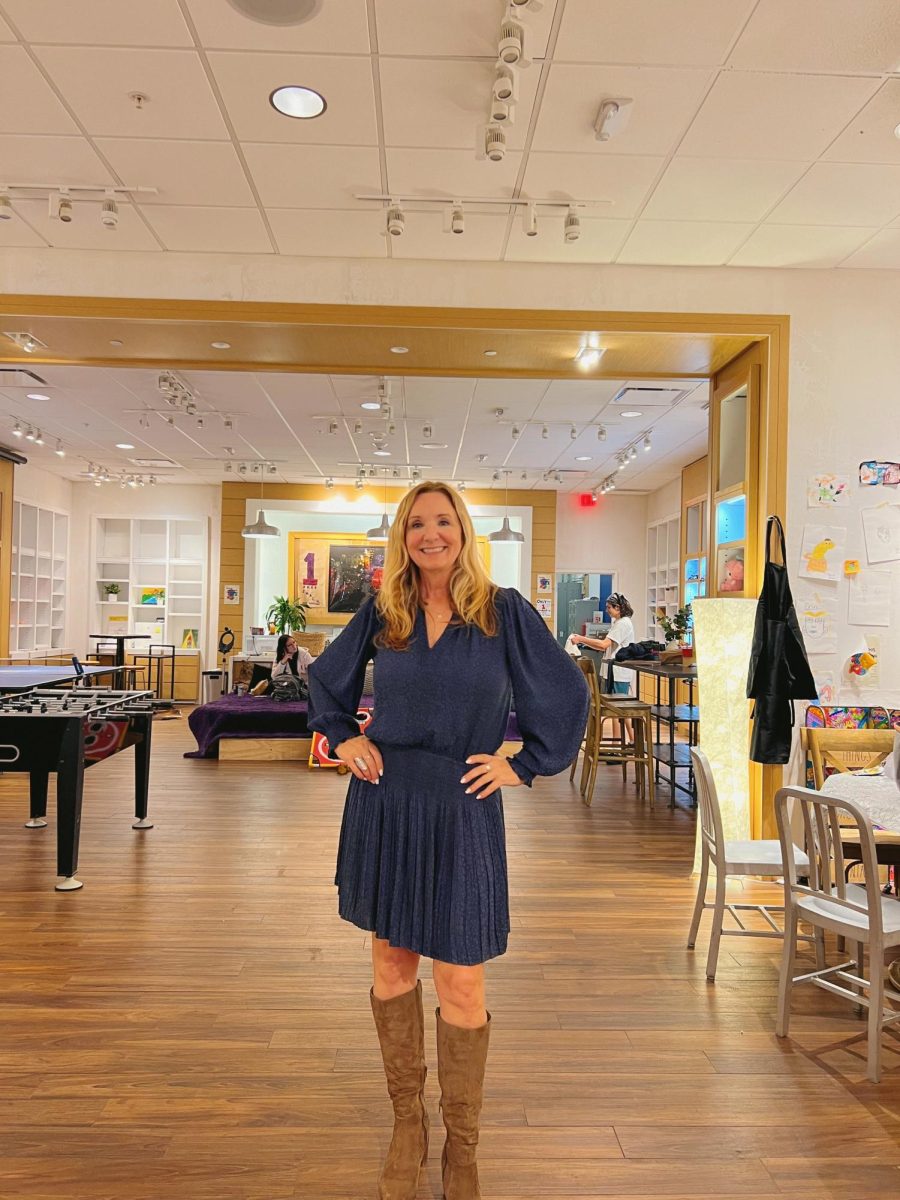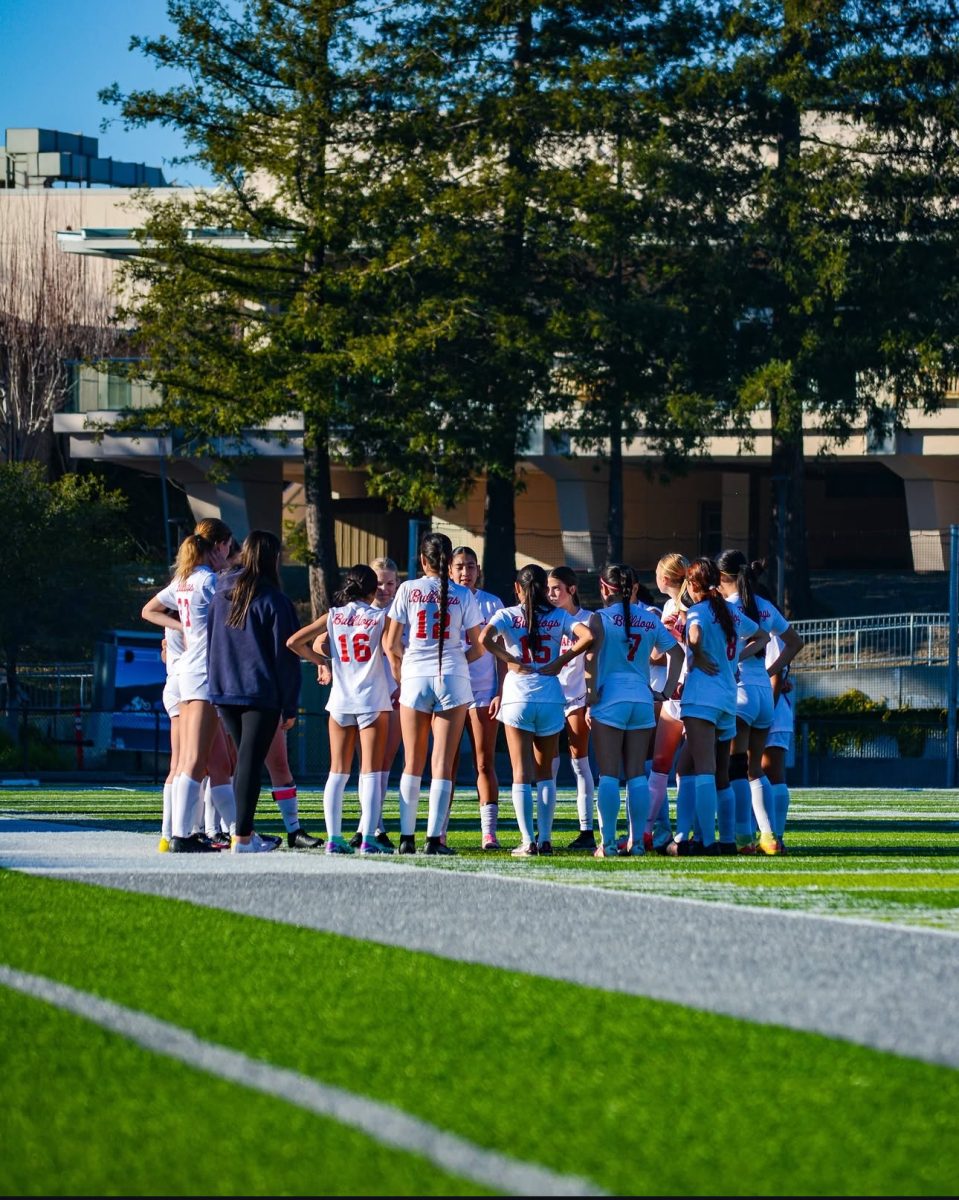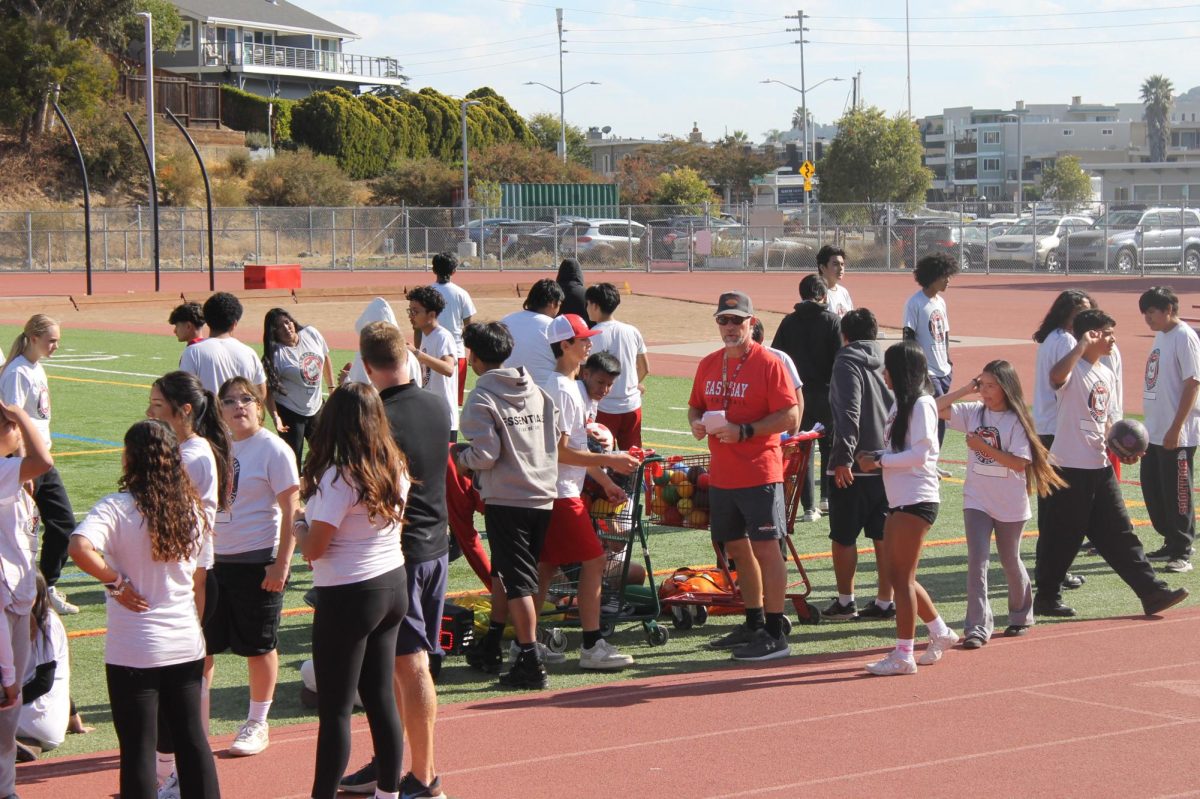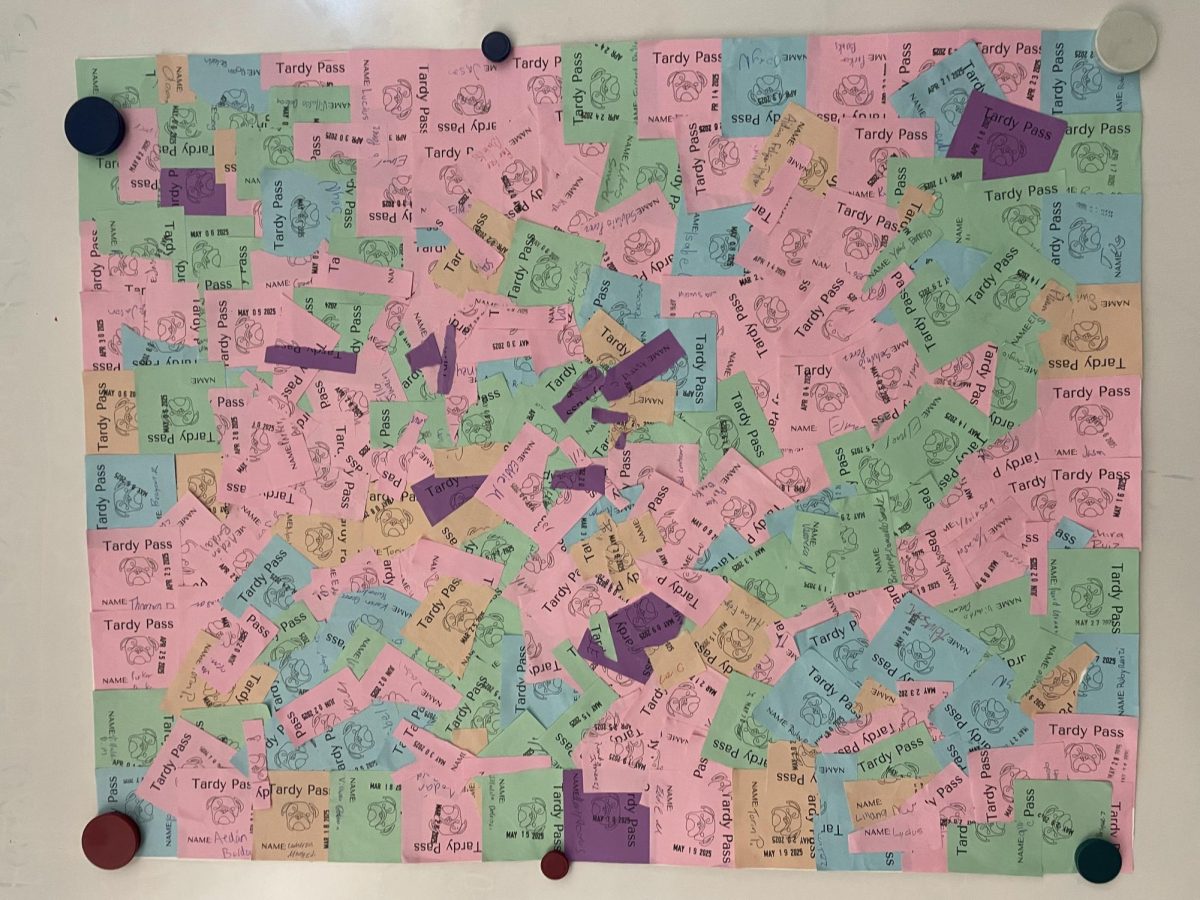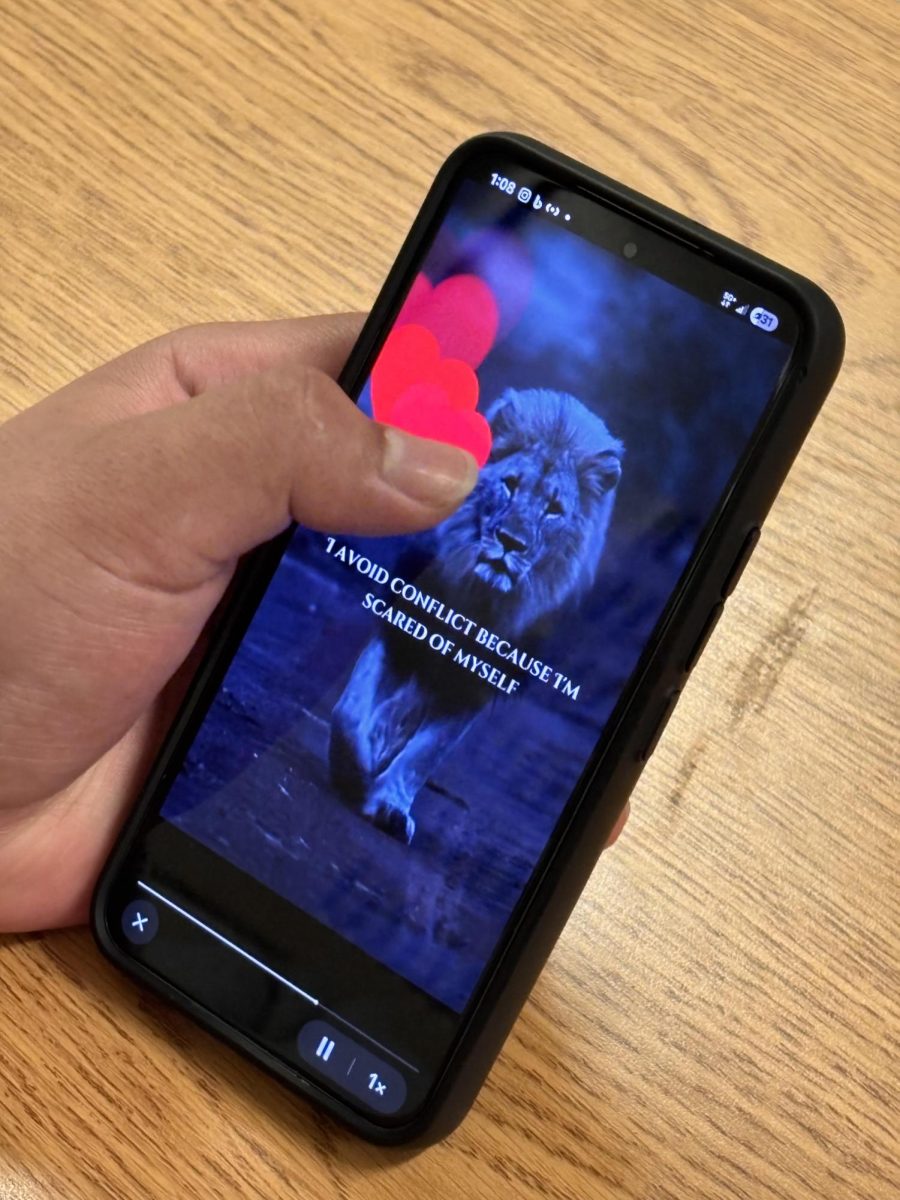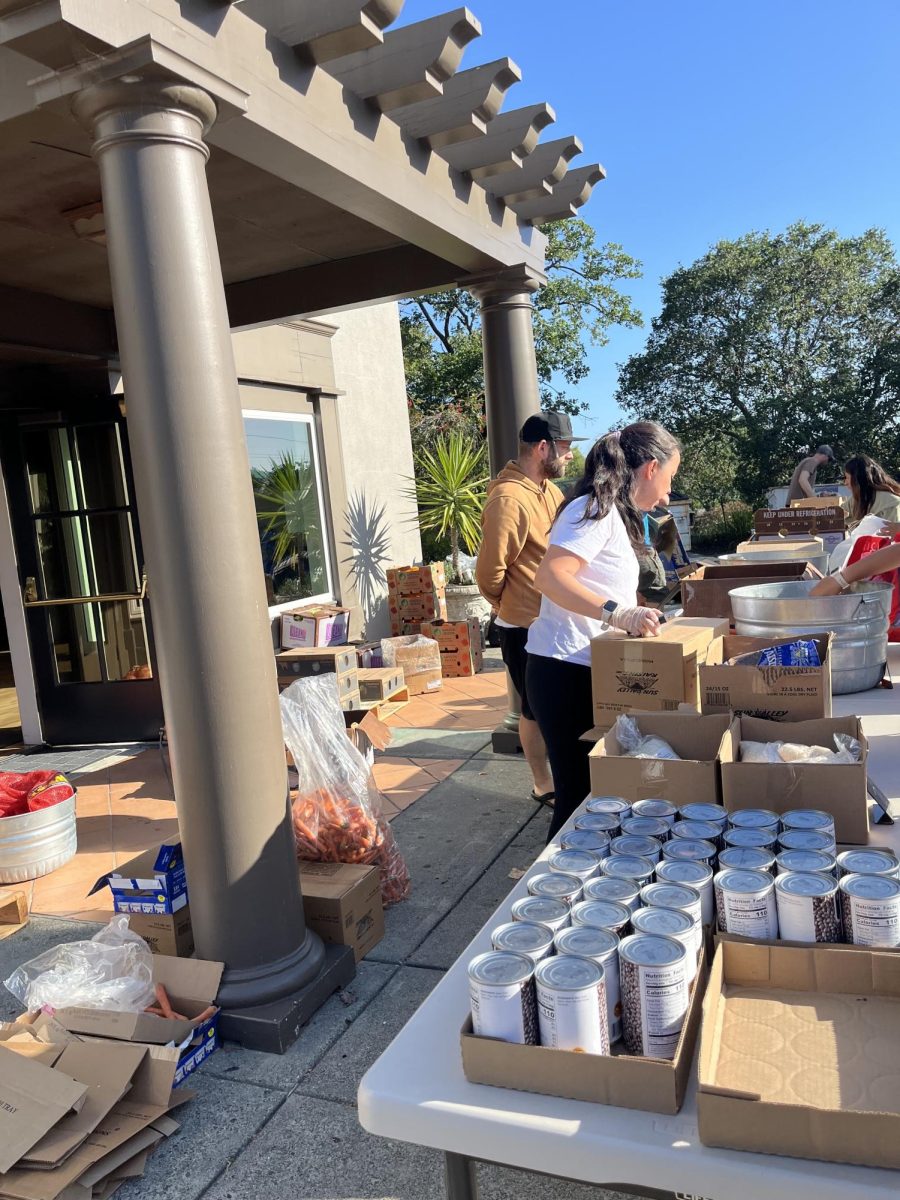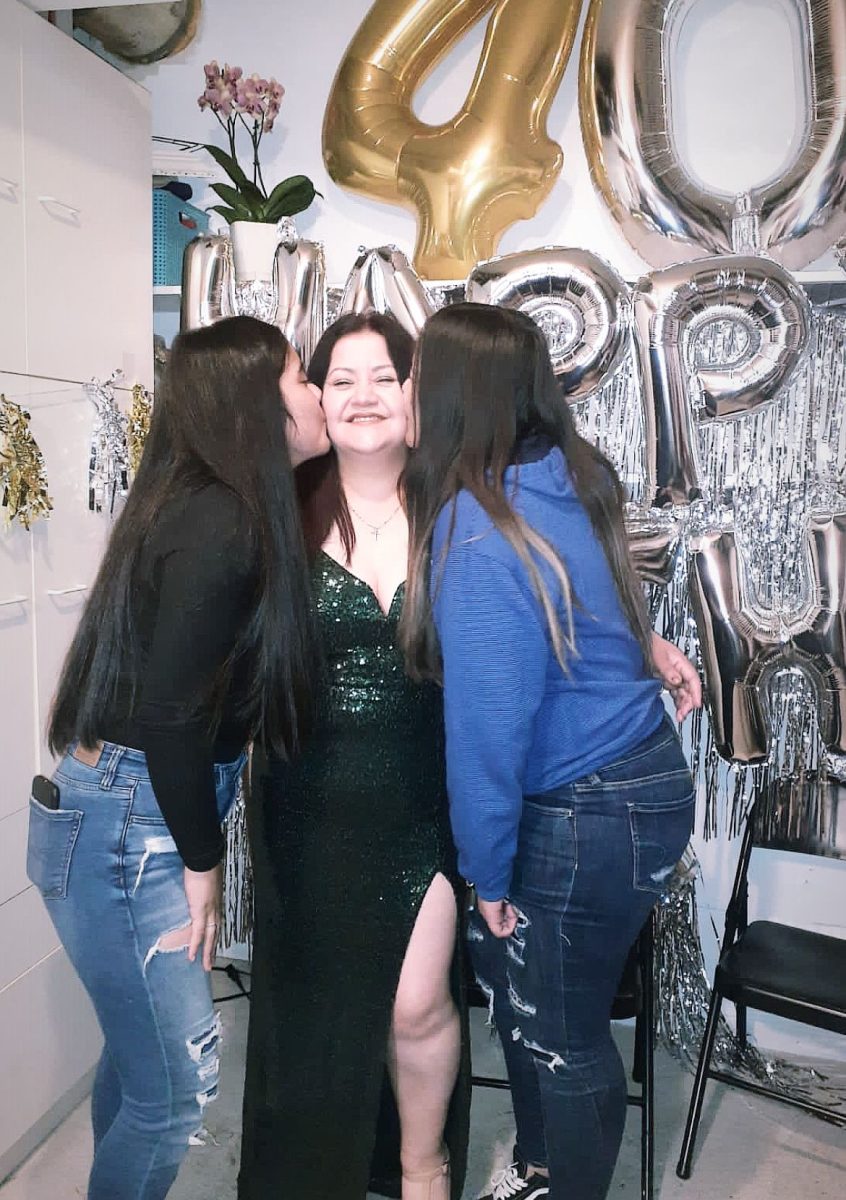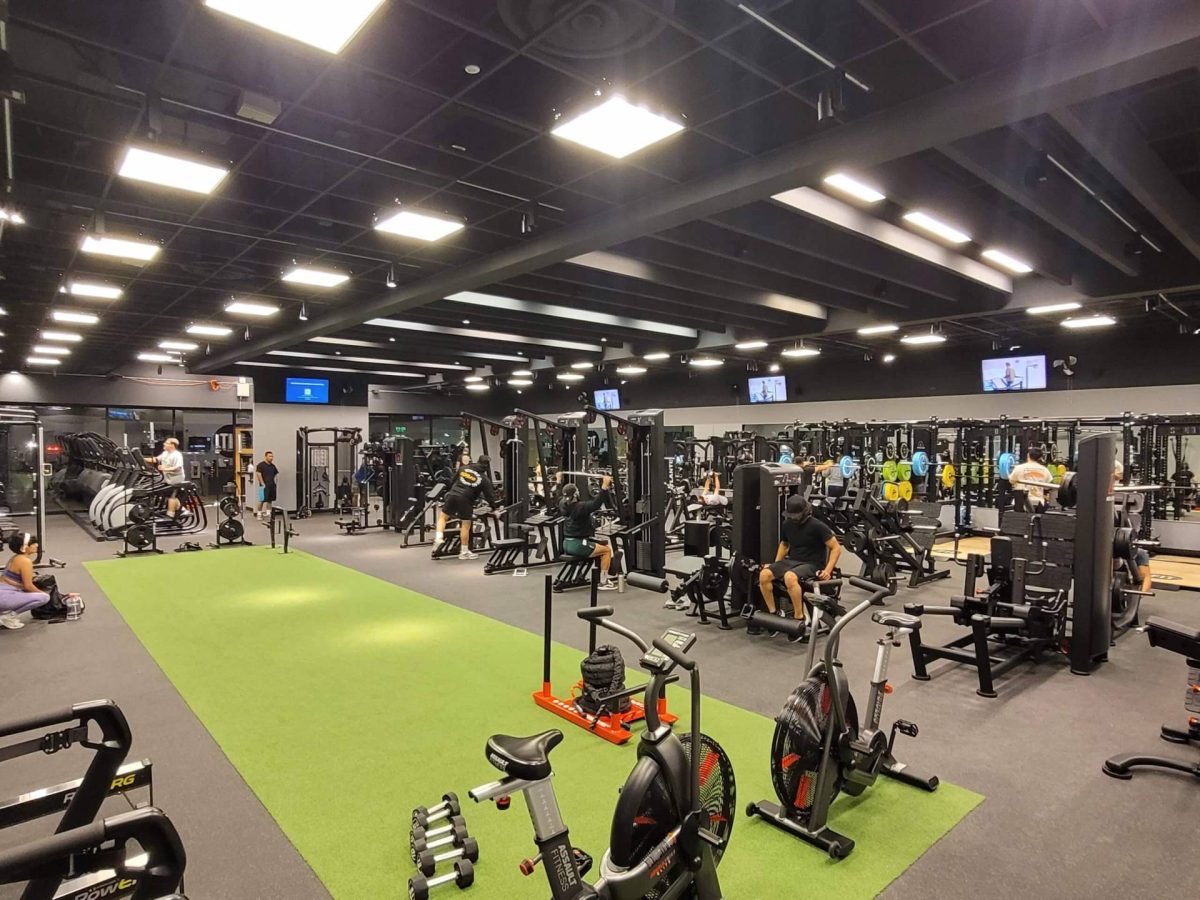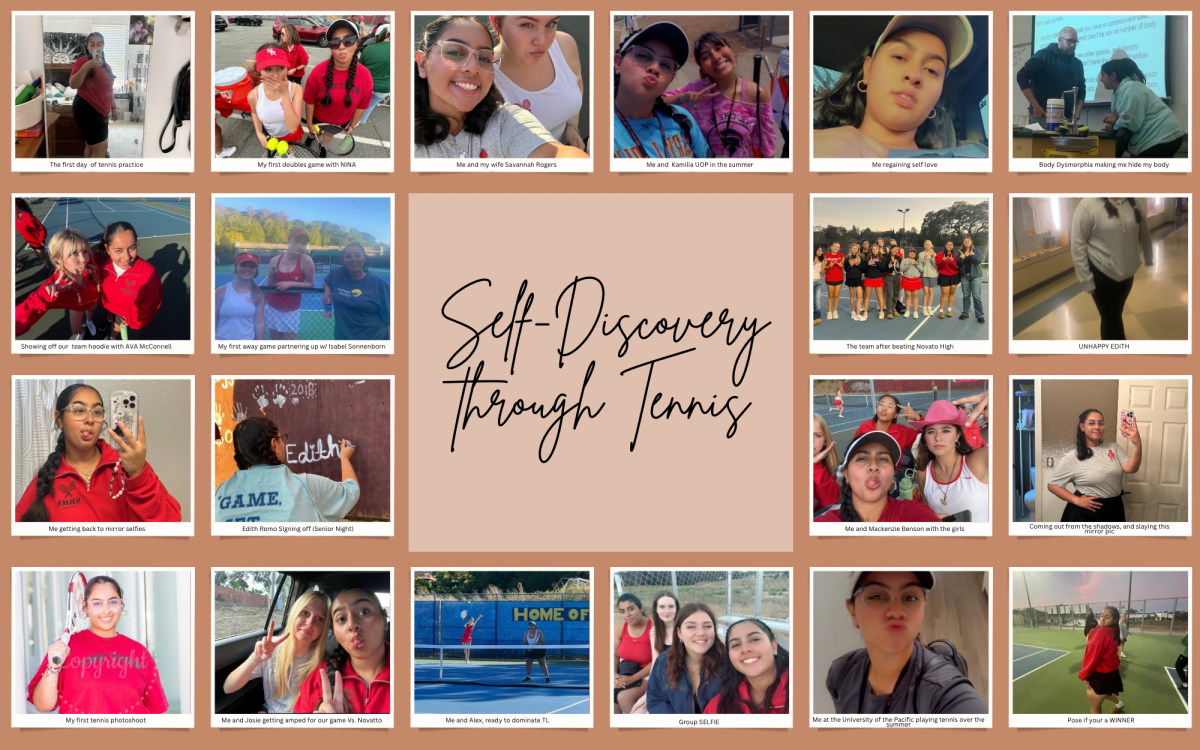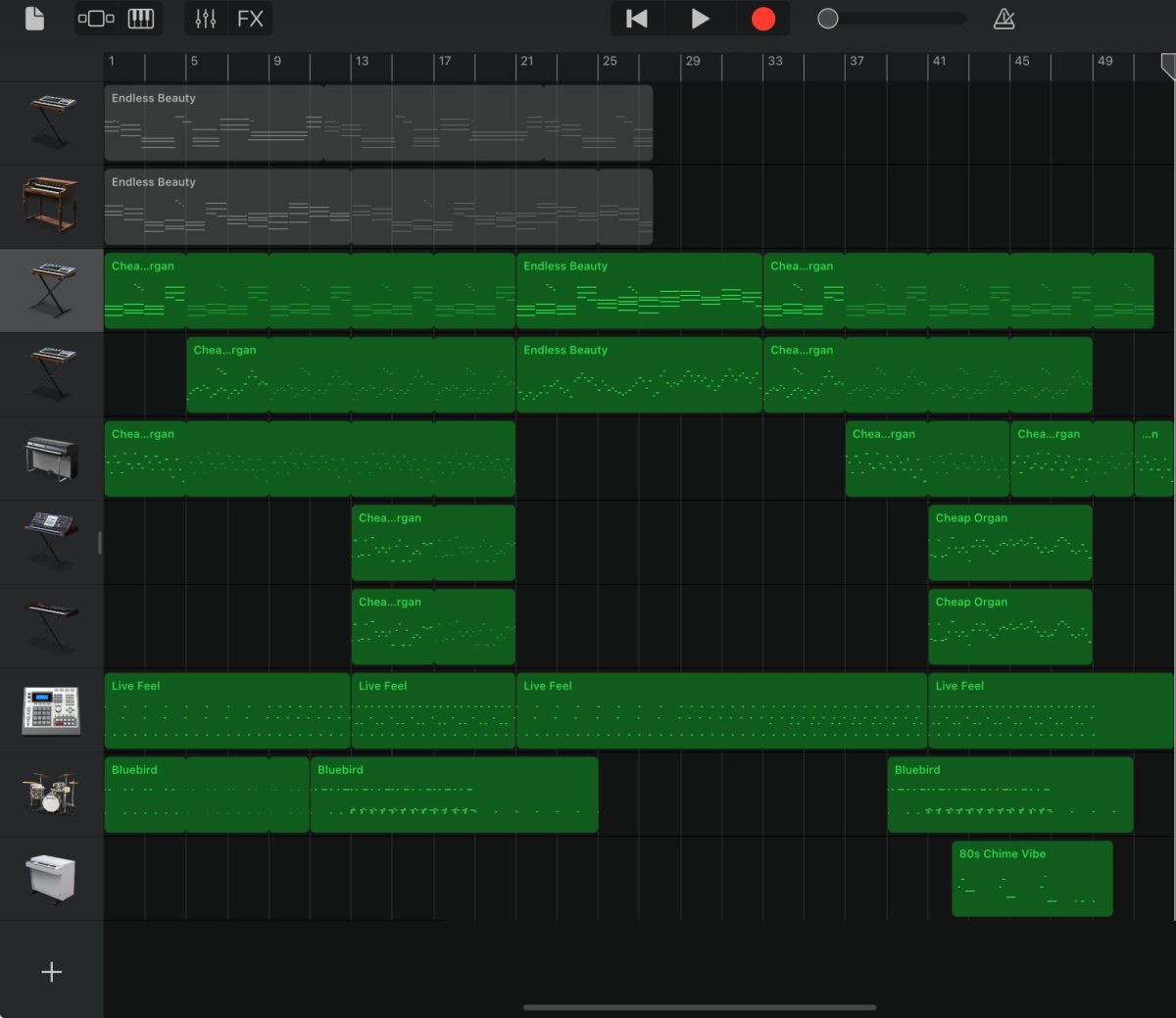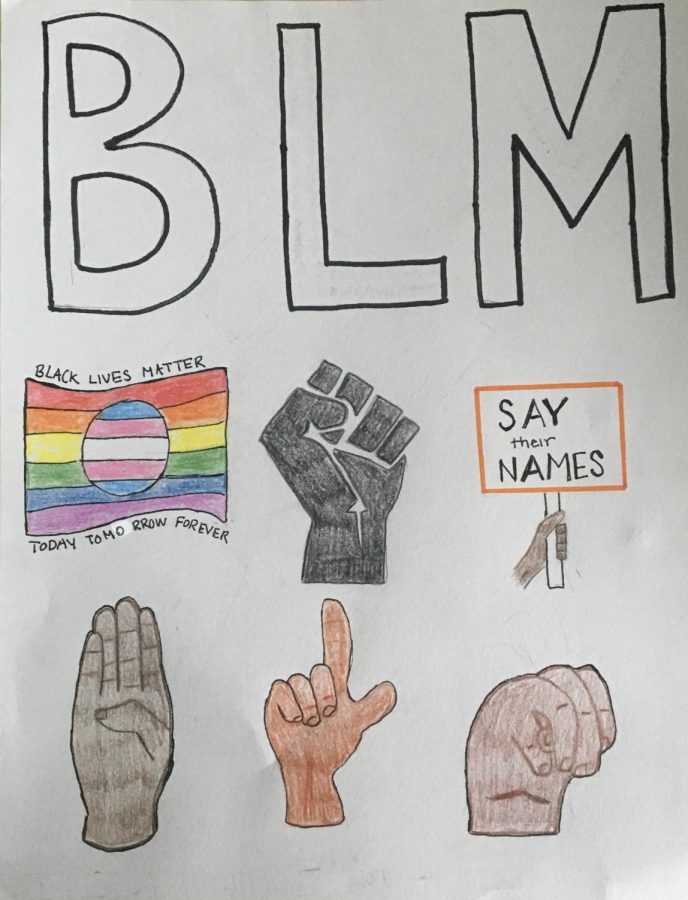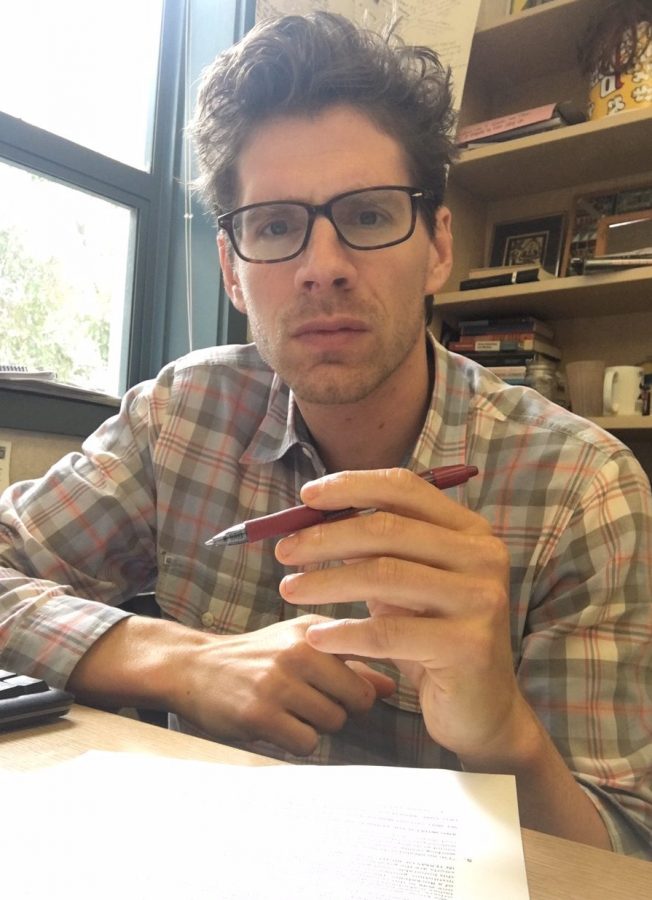On November 12, 2022, Yazuara Alvarez left her home in Guatemala, saying goodbye to her little sister and mother. At only 17 years old she set out on a journey to the United States, that would change her life forever. With only a small sweater and what little amount of food she could fit in her bag, she was on her way to better opportunities.
Like all of the newcomers at our school, Alvarez already experienced such a life-changing event that would put any other 17-year-old in the United States into a coma. “I am so religious, I would just pray to God because I did not know where I was, what I was doing, or what would happen to me,” says Alvarez, a senior in the English Language Development (ELD) program at San Rafael High School.
Despite experiencing something so traumatizing, “they are the nicest kids, the most resilient, amazing people,” says Brent Arndt, a Bridge Teacher at San Rafael. They are the reason he pursued a career as an ELD teacher in the first place. His first assignment was as a long-term sub for an English Second Language teacher (ESL). His plan was to become an English teacher, but after working with those students he immediately fell in love with ELD.
As an open enrollment school, every year, all throughout the school year, San Rafael High School welcomes new students from several different countries. Mainly Spanish-speaking students from Central America. Due to President Trump’s new immigration policies, the number of students this year has dropped. Back in February, when we spoke to Ms. Mazariegos, a Bridge counselor at San Rafael, she said, “This year, I have boarded 40 students. The numbers have been lower this year, compared with the three years that I have worked here.” In past years, she would have already onboarded around 70 students by February.
While some of these students were forced to come here when their parents migrated here, others came by their own will in hopes of a better future. But, what they never imagine is how difficult life would be in a new country.
“As a newcomer, you don’t know anything,” says Gisel Arvizu, an ELD student at San Rafael. That does not necessarily limit itself to school. These students are arriving into a new country, city, school, and even home. Many students are not even here with a parent. They come to live with a grandparent, uncle, family friend, or don’t even have someone to stay with here.
“It’s hard to even generalize their experiences. [Our ELD and Bridge programs] are an incredibly diverse group of kids from different areas,” says Arndt.
Kevin Garcia, a Bridge student at San Rafael, describes the transition as very lonesome. He is currently living with his uncles right now. Although it will never compare to being back home with his parents, he has found really great support through them.
Before entering school, they encouraged him to join the Multicultural Center of Marin at an afternoon program. There he got to meet new friends who also recently migrated to the United States, get more support, and learned how to become a leader in the community. A month after being involved in the program, he enrolled into San Rafael High School as a Bridge student.
Unlike other students, who get dumped into the school, he found it very helpful to get to meet new people and San Rafael better, before entering school. Now, after being involved in the program for a year, he is helping other students integrate into the school and community.
Regardless of the support he received before entering school, it was still very difficult to adapt to the new environment and system. “At the start it was very strange. I would get lost and enter classes I didn’t even have. I would just have to walk out all shy,” says Garcia.
The language barrier is one of the hardest things for them to overcome. “There were times where I did not want to come to school because I felt like the dumbest in the class because I didn’t know English. I was surrounded by people whom I wanted to communicate with, but I couldn’t,” says Y. Alvarez, who has never been a part of the Bridge program and is now in mainstream courses,
The Bridge program helps students from ages 16 and older, who are new to the U.S. get used to school and daily life while learning basic English. It gives them extra support as they adjust to a new country and education system.
When Bridge students have completed the criteria, they are transferred into the ELD program, so they are able to graduate. Under the California Law, AB 21-21, any student coming into the state of California needs to complete only 130 credits to get their high school diploma. In some cases students are also put into college prep courses with non-newcomer students.
“A couple of students have told me this year, that made me feel awesome, that they came here thinking they would just be thrown into something totally different, and they were so relieved and happy that there was a program just for them,” says Arndt. While this allows them to have a safe space to learn, it keeps them rather isolated throughout the day.
They know it’s hard to form connections with English speaking students, when they don’t know the language themselves, but they’d love to. “If we had a friend that spoke English, we would speak English and get to practice it more,” says Maria Alvarez, a Bridge student at San Rafael.
Daniel Hernandez, a Bridge student at San Rafael, emphasized that it’s even hard to make a connection with Spanish speaking students that were born in the United States. He says, “It is evident that the Bridge community and newcomers feel segregated from the students born in the United States. You can’t generate a friendship with the other Latin community. Maybe the language is the main reason because I have noticed that many young people only practice it at home.”
He does not blame the students though. He says that if it were the other way around, and a student only spoke English in a Spanish-speaking country, it would also be hard for the Spanish speakers to form a friendship with them.
Although keeping them slightly segregated, having an alternative for newcomers in both the Bridge and ELD programs has given them a better opportunity to graduate high school and even go on to a university.

In the fall Yazuara will be attending California State University-Humboldt majoring in criminology.
The Bridge and ELD programs are concentrated classes that provide extra support to these students. Not only do they have a different curriculum designed specifically to their needs, they have teachers that work tirelessly to see them succeed. The students have noticed this and care for their teachers deeply. Many of them have found a parental figure in them, especially when living far from their own friends and families.
When Katleen and I interviewed Mr. Arndt’s second period class, this was especially noticeable. He asked them if he should step outside, so they could speak with us honestly about their experiences. There were immediate no’s around the room and simultaneous giggles. It was the complete opposite; the students found comfort in Mr. Arndt and wanted him to be there as they were being vulnerable and opening up to us.
For newcomers, bonds mean everything to them. Upon their arrival in the United States, sometimes the only support they have is from the people they are surrounded by at school.
Although school was significantly hard and Yazuara expressed a desire to quit several times, she says, “Ms. Fortune, my first algebra teacher inspired me to keep studying.” When Yazuara took Ms. Fortune’s class she barely knew English and Ms. Fortune only knew a little bit of Spanish. However, Ms. Fortune still found a way to help her, ultimately making it Yazuara’s favorite class. They communicated through Google translate and formed a really great relationship.
San Rafael High School did not always have such supportive teachers and programs that were really designed for newcomers to succeed.
Samuel Guzman arrived in San Rafael in 2001 at only 16 years old. At the time there was no Bridge program available. So, he was put into ELD classes. Even then, he recalls not even having a teacher that spoke Spanish. There was only one ELD teacher in the entire school that spoke Spanish, so you were lucky if you had them.
He can’t remember actually learning something from his teacher. The students that were there longer, and knew English better would help the students that had just arrived at the school. They would all try to help each other the most they could because no one else in the school did or seemed to want to.
He only stayed in school for a year and a half and did not graduate. School was hard enough on its own, but on top of that he had to manage cleaning a local restaurant at night. He entered work at 10 pm and got out at 7 am. “I couldn’t manage and would fall asleep in my classes,” says Guzman.
“It is really hard to concentrate in class when you have to focus on surviving and paying all of your bills. Especially, when I knew I also had to send money home to help my parents,” says Guzman
With no real support for him at school, he decided he would be better off just working. There was nothing for him at school and he could really use the extra hours. He was all alone when he got here. His brother set him up at San Rafael High School, but went back to Mexico after that. At only 16 years old he was fending for himself in a whole different country.
Although not being able to finish high school, he is still very grateful for all of the opportunities he has had in this country. “This has been a country of immigrants and we have to be grateful for the opportunities,” says Guzman.
Many students are on the same boat as Samuel, having to work after school to either survive here or support their families back home. Kevin works right after school. He told us that he just changes out of his P.E. clothes and runs straight to his job. He can’t even get a bite to eat because half of the time he’s already 10 to 15 minutes late when he arrives. “I don’t know how I do it,” says Garcia.
“Something that would be good is to modify students’ schedules, like Kevin’s, to allow them to leave five to ten minutes earlier, to get to work on time. That way they can get there safely and even eat something. You never know what could happen to you when you’re in a rush,” says Hernandez.
They are very thankful for the accommodations they have through the Bridge and ELD programs, but they still wish the school was a little more considerate of their experiences. They also wish they could get out of this comfort zone they have built in their classes, and become integrated further within the school and community. As, they are often restricted to only hanging out with the people in their classes.
When we spoke to Yazuara, she explained that newcomers limit themselves when it comes to integrating within the community, primarily because they feel that since they were placed in classes with only newcomers, that’s where they belong.
“I think that [the school] prioritizes the students born in the United States,” says Maria. All the newcomers we spoke to expressed resentment towards the school for prioritizing the students born here. They wish the school did more to get them informed and involved.
When Yazuara attended the last senior meeting she said that there was a lot going on and people were visually frustrated. She was hoping that the slides would at least be translated into Spanish. But, they weren’t.
“Especially now with graduation, the ELD students don’t get the same information as the rest of the students,” says Yazuara.
Language is not the only factor keeping the newcomers segregated from the community, but it is a huge factor. Yazura only started to attend social events like Homecoming and Noche De Cultura once she understood English better. But, now that she has been to more events, she wants others to know that you do not need to know English to be integrated and go to these events.
What our school needs is more recruitment. It is really hard to be a newcomer and try new things in a setting with mainly students who have been in the school system for a while and know English well. Samuel always wanted to play baseball at San Rafael, but he never knew how to get on the team. “I would just say I wanted to play baseball, but I didn’t know how, they never told us how,” says Guzman.
Sometimes staff argue that students have to go out of their way to find out how to get involved and join teams. But, that’s easy to say when you’re not the student.
Kevin went to the first tryout for boys soccer this season. When he got there he was very intimidated. Although a good amount of newcomers go to tryouts, the majority are students born here. Even though the coaches speak Spanish, they address everyone in English. They only talk to the students they need to talk to in Spanish. If you are lost in a drill, but don’t ask around, you won’t know what is going on.
That is a very scary setting to be. Especially if you’re not an already outstanding athlete. The coaches will overlook you and not pay as much attention to you. Especially as they have so many other athletes to evaluate and talk to.
When Kevin was at tryouts he said, “I saw so many students born in the United States, so what I did instead was just leave.”
“We, [the school] should be better at creating opportunities for our two populations to connect,” says Zakaria El Ammari, an instructional coach for ELD teachers at San Rafael. We only have one event where Spanish speaking students born here and newcomers really connect with each other. That is Noche De Cultura, and that was only started last year.
San Rafael has slowly implemented change to desegregate the newcomers from mainstream students. “I am hopeful that we can continue to integrate newcomers. Not just into the classroom, but into our entire Bulldog community,” says Judy Schwerin, the wellness coordinator and clinical supervisor at San Rafael.
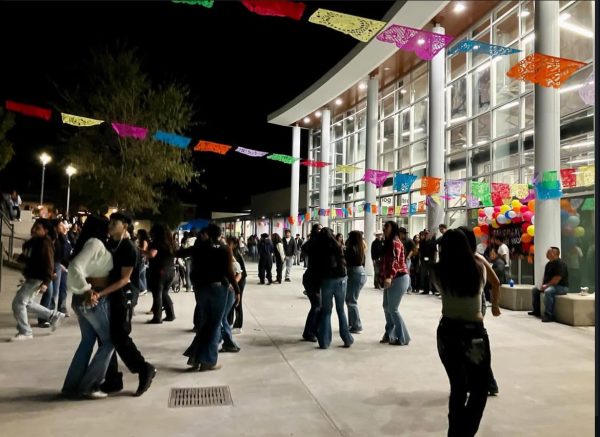
Spanish Translation:
El 12 de Noviembre de 2022, Yazuara Álvarez dejó su hogar en Guatemala despidiéndose de su hermana menor y su madre. Con solo 17 años, ella comenzó su viaje a los Estados Unidos que cambiaría su vida para siempre. Con solo un pequeño suéter y la poca comida que le cabía en su mochila, ella estaba en camino hacia mejores oportunidades.
Como todos los recién llegados a nuestra escuela, Álvarez ya había vivido un evento que cambiaría la vida y dejaría en coma a cualquier otro joven de 17 años en los Estados Unidos. “Yo soy tan religiosa, que le pedí tanto a dios que me ayudara porque yo no sabia cual era mi camino, por donde estaba, o qué estaba haciendo de mí,” dice Y. Álvarez, estudiante de último año del programa de desarrollo del idioma Inglés (ELD) de la Secundaria San Rafael.
A pesar de vivir una experiencia tan traumática, “son unos niños muy amables, resilientes y personas increíbles”, afirma Arndt Brent, profesor de Bridge en San Rafael. Ellos son la razón por la que en primer lugar decidió seguir una carrera como profesor de ELD. Su primer trabajo fue como sustituto a largo plazo de un profesor de Inglés como segunda lengua (ESL). Su plan era convertirse en profesor de Inglés, pero después de trabajar con esos estudiantes, se enamoró de inmediato del desarrollo del Inglés.
Como escuela de inscripción abierta, cada año, durante todo el ciclo escolar, la Secundaria San Rafael recibe a nuevos estudiantes de varios países. Principalmente estudiantes hispanohablantes de Centroamérica. Debido a las nuevas políticas migratorias de Trump, el número de estudiantes este año ha disminuido. En Febrero, cuando hablamos con la Sra. Mazariegos, consejera de Bridge en San Rafael, nos comentó, “Este año he incorporado a 40 estudiantes. La cantidad ha sido menor este año, en comparación con los tres años que llevo trabajando aquí”. En años anteriores, ya habría incorporado a unos 70 estudiantes para Febrero.
Mientras algunos de estos estudiantes se vieron obligados a venir aquí cuando sus padres emigraron, otros vinieron por voluntad propia con la esperanza de un futuro mejor. Pero lo que nunca imaginaron es lo difícil que sería la vida en un nuevo país.
“Como recién llegado, no sabes nada”, dice Gisel Arvizu, estudiante de ELD en San Rafael. Esto no se limita necesariamente a la escuela. Estos estudiantes llegan a un nuevo país, ciudad, escuela e incluso hogar. Muchos ni siquiera están aquí con sus padres. Vienen a vivir con un abuelo, un tío, un amigo de la familia o ni siquiera tienen con quién quedarse.
“Es difícil incluso generalizar sus experiencias. [Nuestros programas ELD y Bridge] cuentan con un grupo increíblemente diverso de niños de diferentes zonas,`” afirma Arndt.
Kevin García, estudiante de Bridge en San Rafael, describe la transición como muy solitaria. Actualmente vive con sus tíos. Aunque nunca se comparará con estar de vuelta en casa con sus padres, ha encontrado un gran apoyo en ellos.
Antes de entrar a la escuela, lo animaron a unirse al Centro Multicultural de Marín en un programa por la tarde. Allí conoció a nuevos amigos que también habían emigrado recientemente a los Estados Unidos, recibió más apoyo y aprendió a ser un líder en la comunidad. Un mes después de participar en el programa, se inscribió en la Secundaria San Rafael como estudiante de Bridge.
A diferencia de otros estudiantes, que nadamas son expuestos a la escuela, a él le resultó muy útil conocer gente nueva y San Rafael mejor, antes de ingresar. Ahora, después de un año de participación en el programa, está ayudando a otros estudiantes a integrarse en la escuela y la comunidad.
A pesar del apoyo que recibió antes de entrar a la escuela, aún le fue muy difícil adaptarse al nuevo entorno y sistema. “Me sentí raro a la hora que entré a estudiar. Me perdía las clases. Entraba a clases que no me tocaban y me salía apenado”, dice García.
La barrera del idioma es una de las cosas más difíciles de superar para ellos. “Había veces que ya no quería estar estudiando porque me sentía como más inutill de la clase por no saber Inglés. Y por estar alrededor de personas con las que me quisiera comunicar, pero no pude,” dice Y. Álvarez.
El programa Bridge ayuda a estudiantes de 16 años o más, recién llegados a los Estados Unidos, a familiarizarse con la escuela y la vida cotidiana mientras aprenden Inglés básico. Les da apoyo adicional mientras se adaptan a un nuevo país y sistema educativo.
Cuando los estudiantes de Bridge cumplen con los criterios, se les transfiere al programa ELD para que puedan graduarse. Según la Ley de California, AB 21-21, cualquier estudiante que ingrese al estado de California solo necesita completar 130 créditos para obtener su diploma de la secundaria. En algunos casos, los estudiantes también participan en cursos de preparación universitaria con estudiantes que ya son nacidos aquí.
“Un par de estudiantes me han dicho este año, y eso me hizo sentir genial, que vinieron aquí pensando que se encontrarían con algo totalmente diferente, y que estaban tan aliviados y felices de que hubiera un programa solo para ellos”, dice Arndt. Mientras esto les permite tener un espacio seguro para aprender, los mantiene bastante aislados durante el día.
Saben que es difícil establecer conexiones con estudiantes de habla Inglés, cuando ellos mismos no conocen el idioma, pero les encantaría saberlo. “Si tuviésemos un amigo que hablara inglés, podríamos hablar Inglés también y lo vamos practicando,” dice María Álvarez, estudiante de Bridge en San Rafael.
Daniel Hernández, estudiante de Bridge en San Rafael, enfatizó que es difícil conectar con estudiantes hispanohablantes nacidos en Estados Unidos. Dice, “Se nota que la comunidad de Bridge o los que son nuevos ingresos se sienten aparte de los que son nacidos acá. No se puede generar una amistad con la otra comunidad. Tal vez el idioma sea lo principal, he notado que muchos jóvenes, casi solo practican el Español en sus casas.”
Sin embargo, no culpa a los estudiantes. Dice que si fuera al revés, y un estudiante solo hablara Inglés en un país hispanohablante, también sería difícil para los hispanohablantes formar una amistad.
Aunque mantenerlos un poco segregados, tener una alternativa para los recién llegados tanto en el programa Bridge como en el programa ELD, les ha dado una mejor oportunidad de graduarse de la escuela secundaria e incluso ir a la universidad.
En otoño, Yazuara asistirá a la California State Polytechnic University, Humboldt, especializándose en criminología. Los programas Bridge y ELD no son clases para desconcertar a los estudiantes. Son clases que les dan apoyo adicional.
No solo cuentan con un currículo diferente, diseñado específicamente para sus necesidades, sino que también cuentan con profesores que trabajan incansablemente para que tengan éxito. Los estudiantes lo han notado y sienten un profundo cariño por sus profesores. Muchos han encontrado en ellos una figura paterna, especialmente al vivir lejos de sus amigos y familiares.
Cuando Katleen y yo entrevistamos a la clase del segundo periodo del Sr. Arndt, esto fue especialmente notable. Les preguntó si querían que se fuera para que pudieran hablar con nosotras con sinceridad sobre sus experiencias. Hubo rechazos inmediatos en la clase y risas simultáneas. Fue todo lo contrario, los estudiantes encontraron consuelo en el Sr. Arndt y querían que estuviera allí mientras ellos mostraban vulnerables y nos contaban sus historias.
Para los recién llegados, las conexiones son muy importantes para ellos. Al llegar a los Estados Unidos, a veces el único apoyo que reciben es el de las personas que los rodean en la escuela.
Aunque la escuela era bastante difícil y Yazuara expresó varias veces su deseo de dejarla, dice, “Sr. Fortune mi primera maestra de álgebra me inspiró más a seguir estudiando.” Cuando Yazuara tomó la clase de la Sra. Fortune, apenas sabía Inglés, y la Sra. Fortune sólo sabía un poco de Español. Sin embargo, la Sra. Fortune encontró la manera de ayudarla, convirtiéndola en la clase favorita de Yazuara. Se comunicaron a través del traductor de Google y formaron una relación muy buena.
La escuela secundaria San Rafael no siempre tuvo maestros que apoyaban a los estudiantes, ni programas que estuvieran realmente diseñados para que los recién llegados tuvieran éxito.
Samuel Guzmán llegó a San Rafael en 2001 teniendo solo 16 años. En ese entonces no existía el programa Bridge. Así que lo asignaron a clases de ELD. Entonces, recuerda que ni siquiera tenía un profesor que hablara Español. Solo había un profesor de ELD en toda la escuela que hablaba Español, así que tenías suerte si te tocaba.
No recuerda haber aprendido nada de su profesor. Los alumnos que llevaban más tiempo allí y sabían Inglés mejor ayudaban a los recién llegados. Todos intentaban ayudarse mutuamente lo mejor que podían, porque nadie más en la escuela lo hacía o parecía querer hacerlo.
Solo estudió un año y medio y no se graduó. La escuela ya era bastante difícil, pero además de eso, tenía que encargarse de limpiar un restaurante local por la noche. Entraba a trabajar a las 10 de la noche y salía a las 7 de la mañana. “No aguantaba y me dormía en las clases.”, dice Guzmán.
“Es muy difícil concentrarte en la escuela cuando tienes que enfocarte en cómo vas a sobrevivir y pagar todos tus gastos. Sobre todo también tenía que mandar a mi casa para ayudar a mis papás,” dice Guzman.
Sin ningún apoyo real en la escuela, decidió que le iría mejor trabajando. No había nada para él en la escuela y le vendrían muy bien las horas extra. Su hermano lo inscribió en la Secundaria San Rafael, pero después regresó a México. Con solo 16 años, se cuidó solo en un país completamente diferente.
Aunque no pudo terminar la secundaria, sigue muy agradecido por todas las oportunidades que ha tenido en este país. “Este país ha sido un país de inmigrantes y hay que estar muy agradecidos por las oportunidades,” dice Guzman.
Muchos estudiantes están en la misma situación que Samuel, teniendo que trabajar después de la escuela para sobrevivir aquí o para mantener a sus familias en casa. Kevin trabaja justo después de la escuela. Nos contó que simplemente se cambia la ropa de educación física y corre directo a su trabajo. Ni siquiera puede comer algo porque a veces llega con 10 o 15 minutos de retraso. “No entiendo cómo lo hago,” dice García.
“Como Kevin, dejarlo ir unos cinco o diez minutos para el irse más tranquilo y no irse corriendo, porque ir de prisa, más de algo le puede pasar en camino,” dice Hernandez.
Están muy agradecidos por los conocimientos que tienen a través de los programas Bridge y ELD, pero aún desean que la escuela sea un poco más considerada con sus experiencias. También desean poder salir de la zona de confort que han construido en sus clases e integrarse más en la escuela y la comunidad. Ya que, a menudo, se ven limitados a pasar tiempo con sus compañeros de clase.
Cuando hablamos con Yazuara, ella explicó que los recién llegados se limitan a integrarse a la comunidad. Principalmente porque sienten que, dado que fueron metidos en clases sólo con recién llegados, ahí es donde pertenecen.
“Yo pienso que le dan más prioridad a los nacidos aquí,” dice M. Alvarez. Todos los recién llegados con los que hablamos expresaron su resentimiento hacia la escuela por priorizar a los estudiantes nacidos aquí. Desearían que la escuela hiciera más por informarlos e involucrarlos.
Cuando Yazuara asistió a la última reunión de fin de curso, comentó que había mucha actividad y que la gente estaba frustrada visualmente. Esperaba que al menos tradujera las diapositivas al español. Pero no fue así.
“Especialmente ahora con la graduación, nosotros los estudiantes de ELD no tenemos la misma información que los demás,” dice Y. Alvarez.
El idioma no es el único factor que mantiene a los recién llegados aislados de la comunidad, pero es un factor muy importante. Yazura sólo empezó a asistir a eventos sociales como el Homecoming y la Noche de Cultura cuando comprendió mejor el Inglés. Pero ahora que ha asistido a más eventos, quiere que los demás sepan que no es necesario saber Inglés para integrarse y asistir a ellos.
Lo que nuestra escuela necesita es más reclutamiento. Es muy difícil ser un recién llegado y probar cosas nuevas en un entorno con principalmente estudiantes que llevan un tiempo en el sistema escolar y saben bien Inglés. Samuel siempre quiso jugar béisbol en San Rafael, pero nunca supo cómo entrar en el equipo. ”Yo solo decía que quería jugar baseball, pero no sabía cómo, no te decían como,” dice Guzman.
A veces, los administradores dicen que los estudiantes tienen que esforzarse para descubrir cómo participar y unirse a los equipos. Pero es fácil decirlo cuando no eres el estudiante.
Kevin asistió a la primera prueba de fútbol masculino de esta temporada. Al llegar, se sintió muy intimidado. Aunque muchos recién llegados asisten a las pruebas, la mayoría son estudiantes nacidos aquí. Aunque los entrenadores hablan español, se dirigen a todos en Inglés. Solo hablan en Español con los estudiantes con los que necesitan hablar. Si te pierdes en un ejercitarse y no preguntas, no sabrás qué está pasando.
Ese es un entorno muy intimidante. Sobre todo si no eres un atleta destacado. Los entrenadores te ignorarán y no te prestarán tanta atención. Sobre todo porque tienen tantos otros atletas a quienes evaluar y con quienes hablar.
Cuando Kevin estaba en las pruebas dijo, “mire que habían varios niños nacidos aquí, y lo mejor que hice fue quitar.”
“Nosotros, [la escuela], deberíamos mejorar la creación de oportunidades para que nuestras dos poblaciones se conecten”, dice Zakaria El Ammari, asesor pedagógica de profesores de ELD en San Rafael. Solo tenemos un evento donde los estudiantes hispanohablantes nacidos aquí y los recién llegados realmente conectan entre sí. Se trata de la Noche de Cultura, y comenzó el año pasado.
San Rafael ha implementado lentamente cambios para desegregar a los recién llegados de los estudiantes regulares. “Tengo la esperanza de que podamos seguir integrando a los recién llegados. No solo en el aula, sino en toda nuestra comunidad Bulldog”, afirma Judy Schwerin, coordinadora de bienestar y supervisora clínica de San Rafael.


